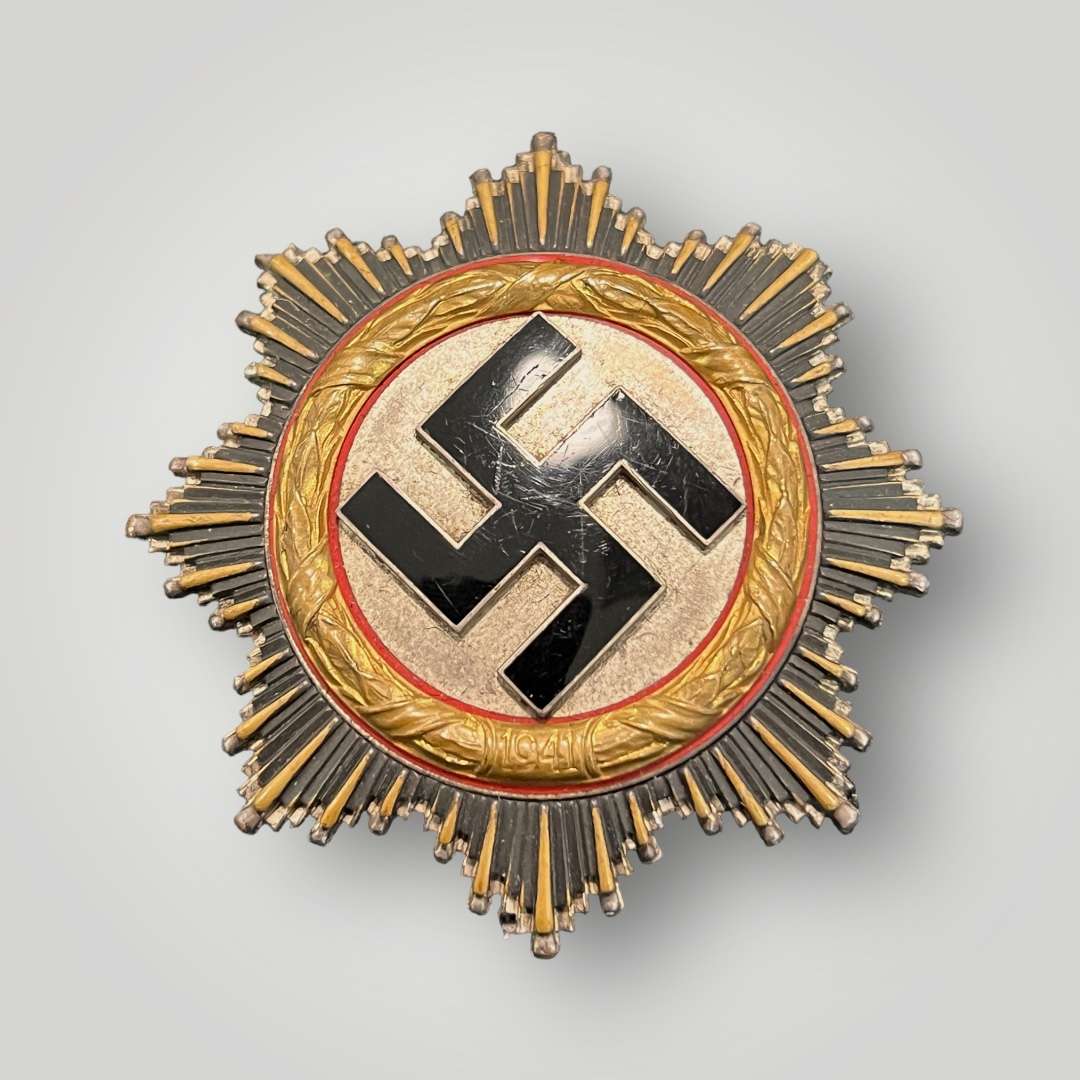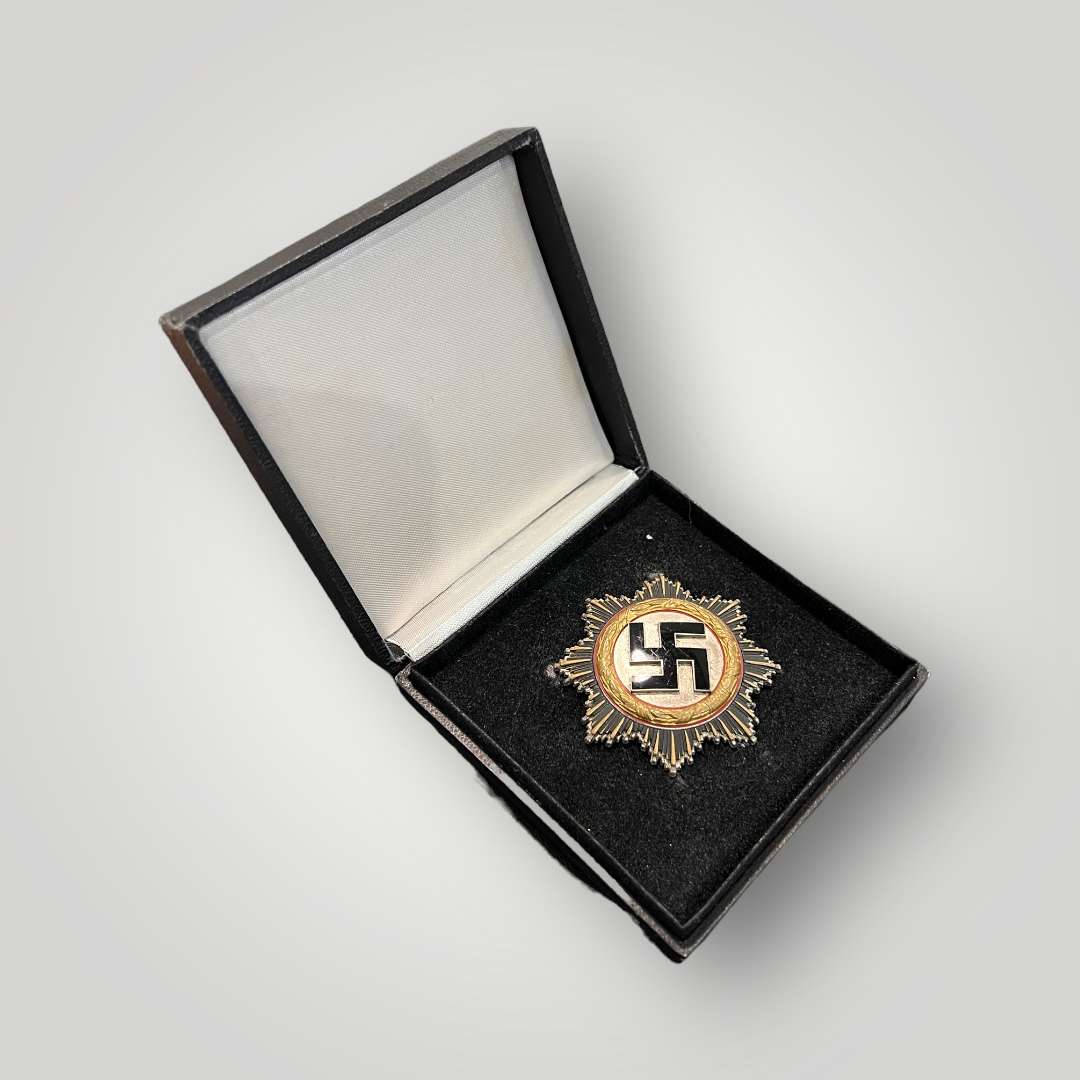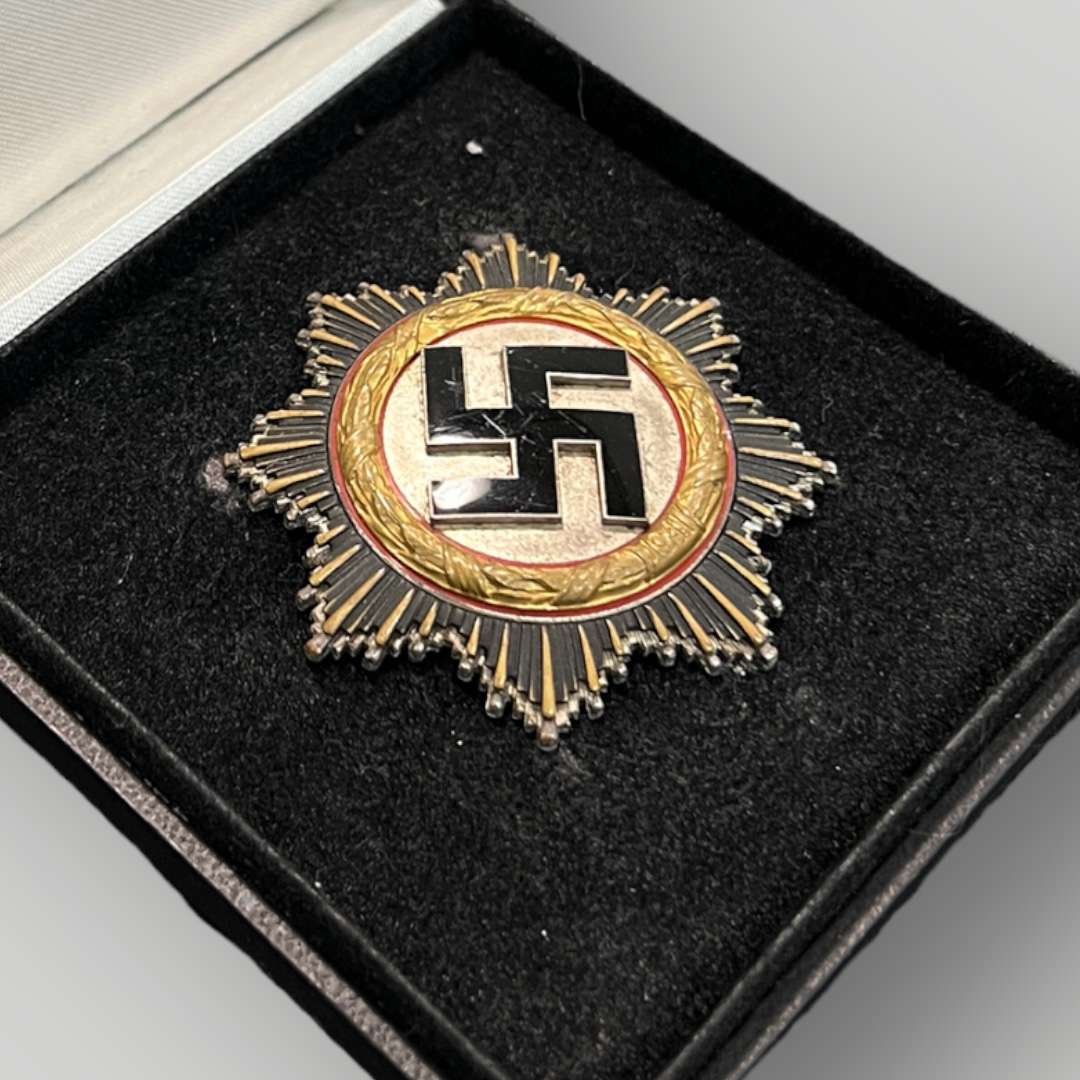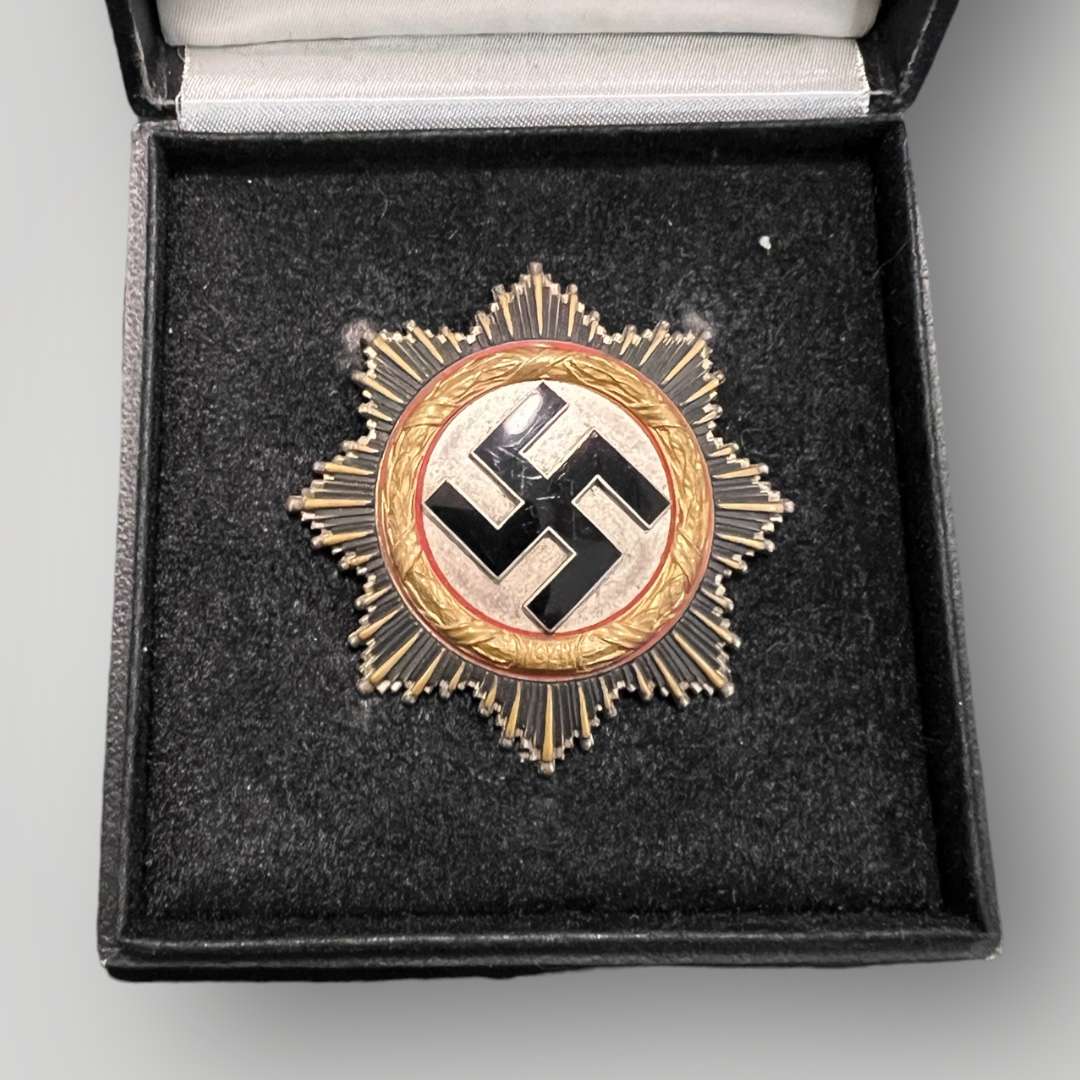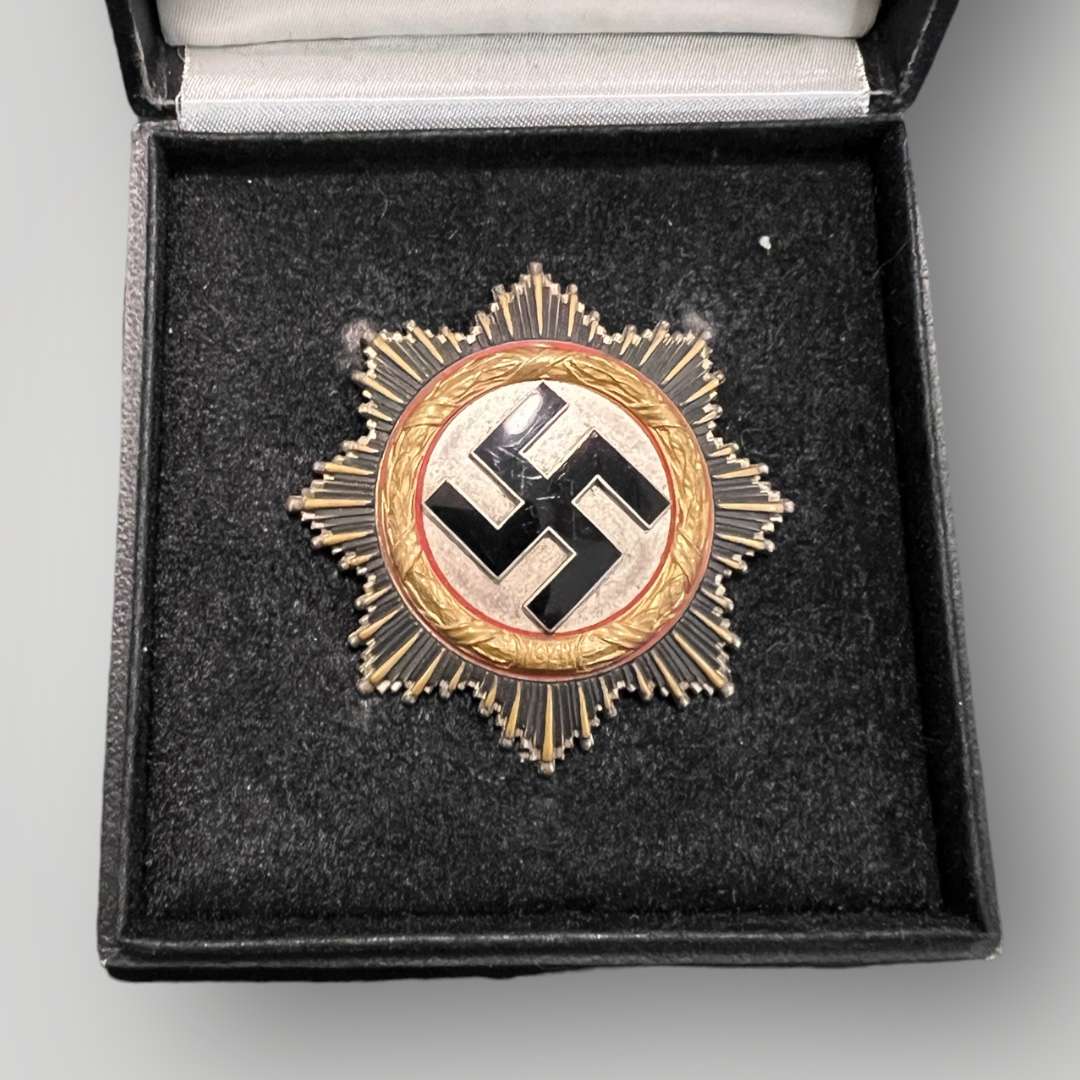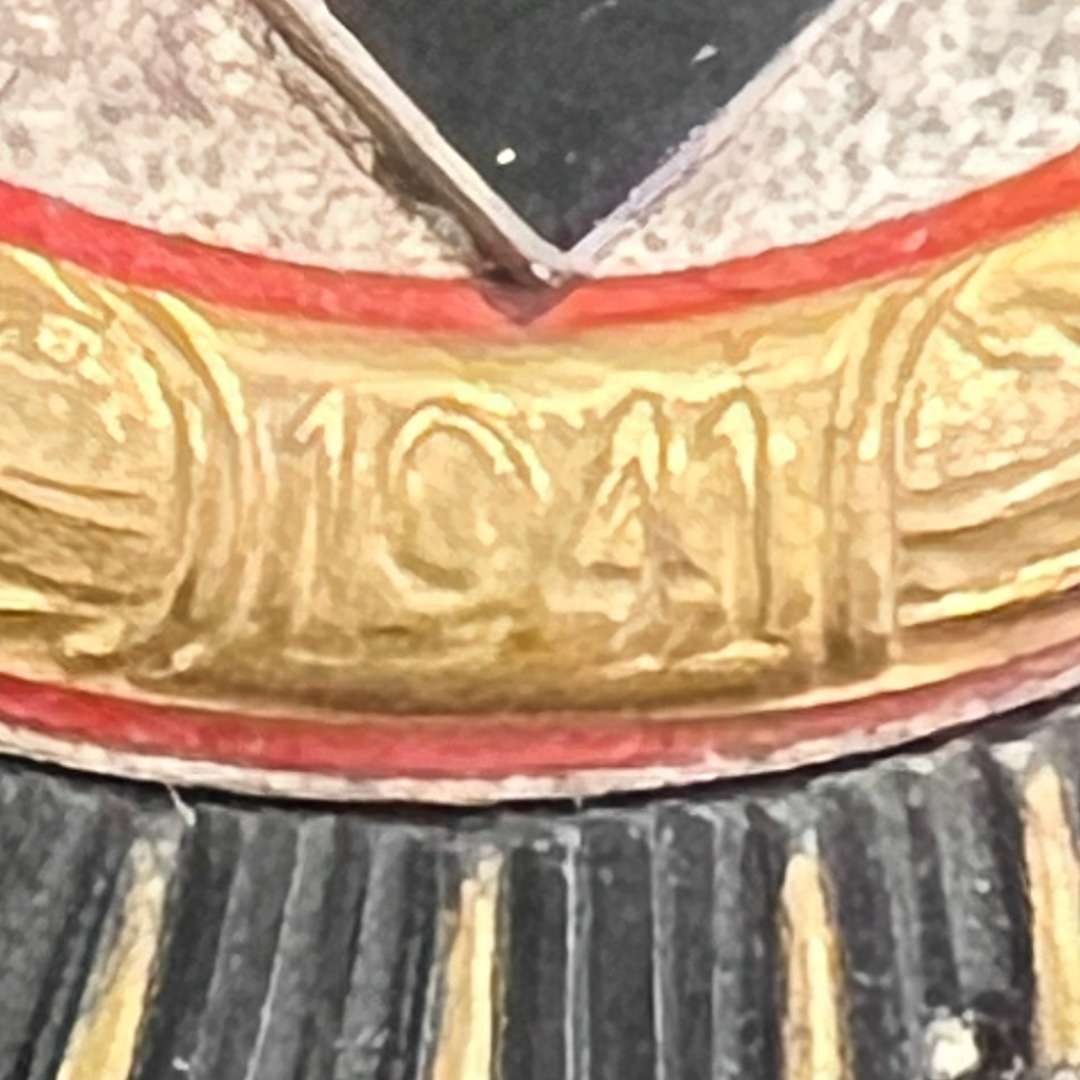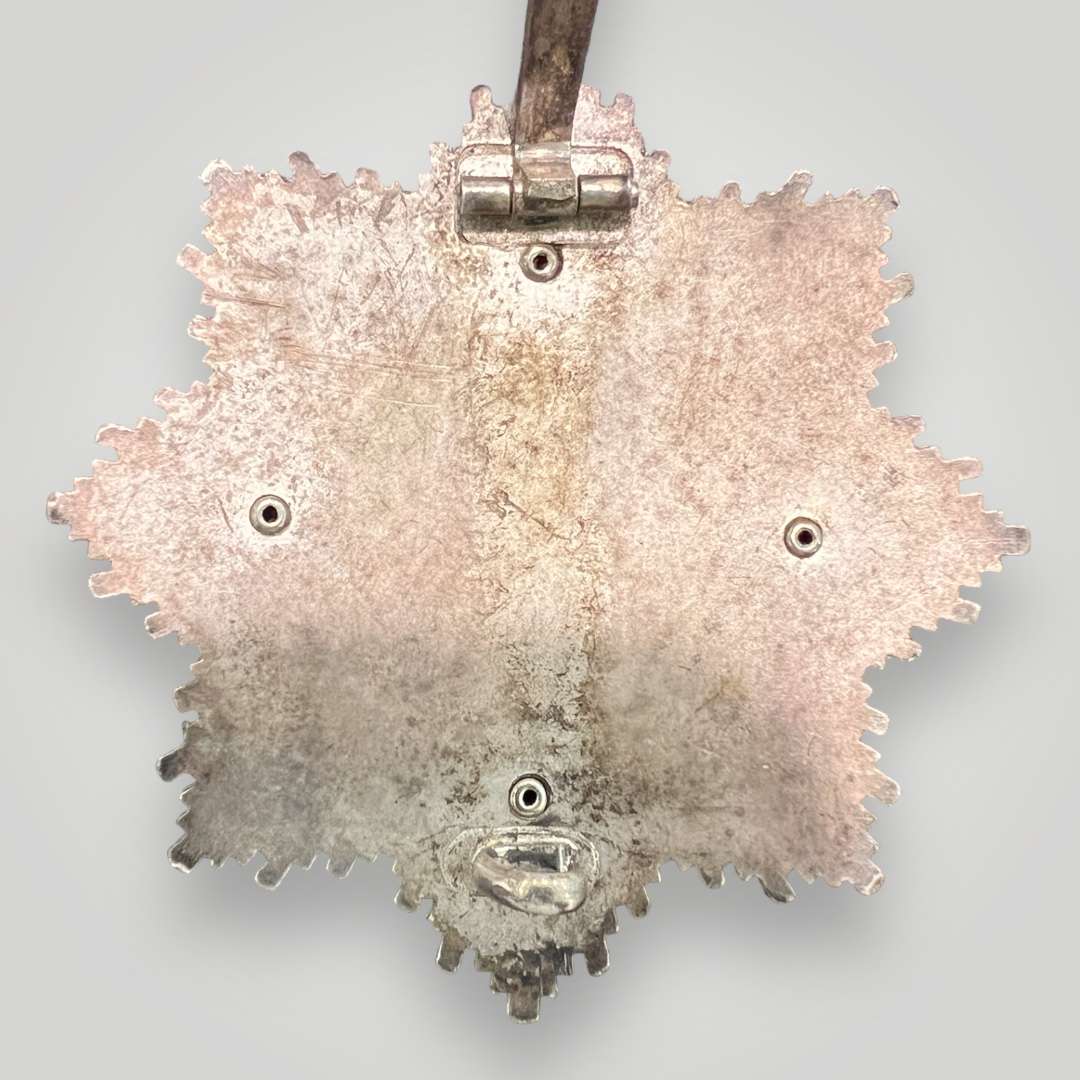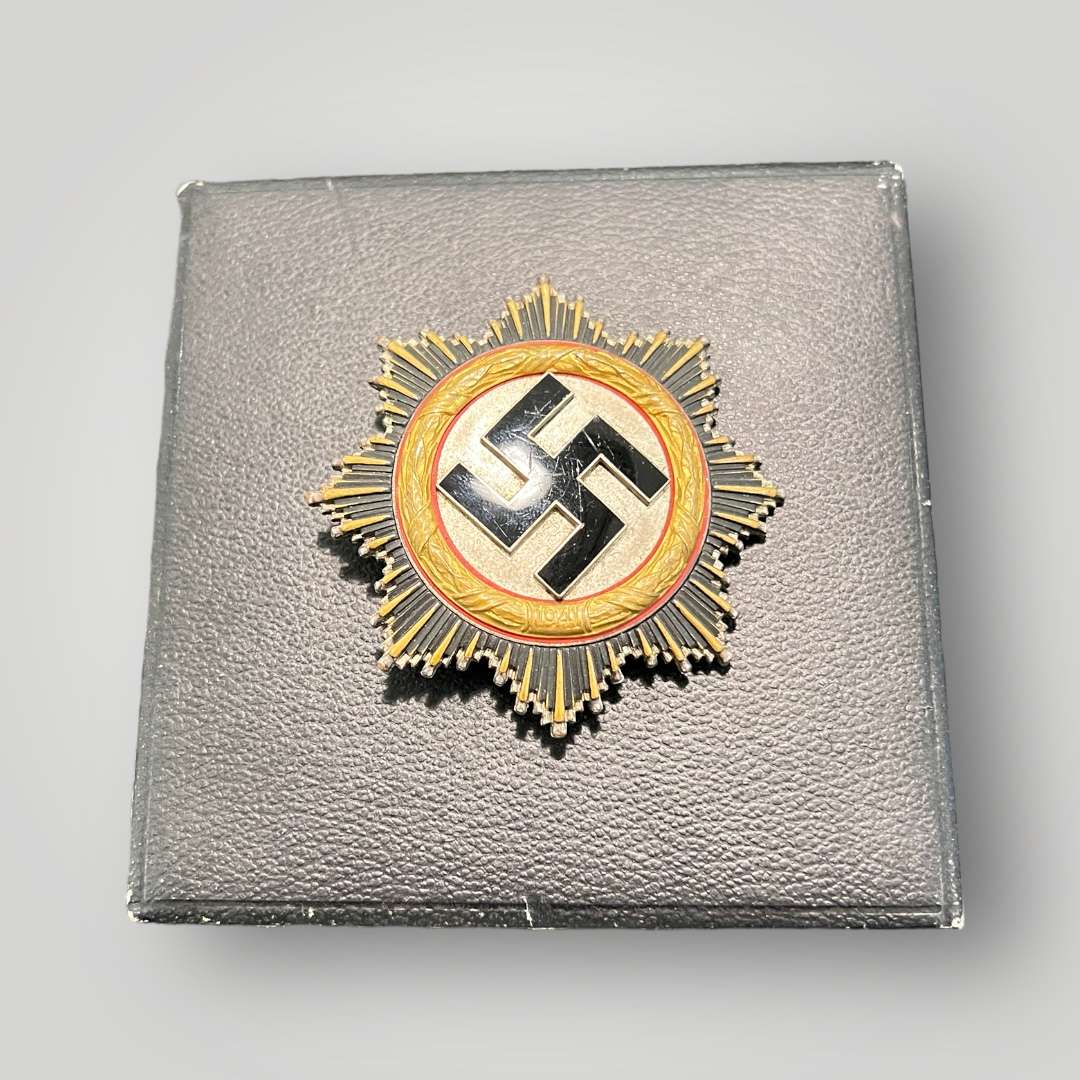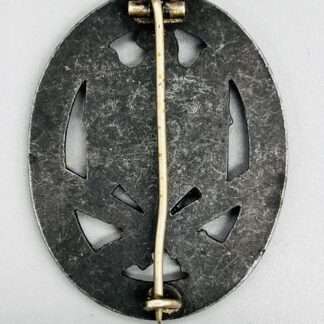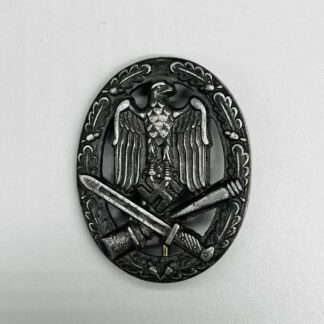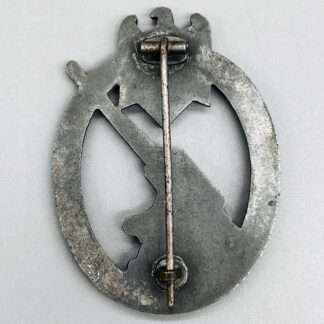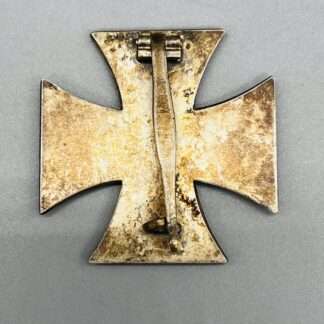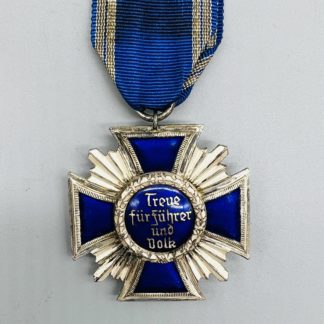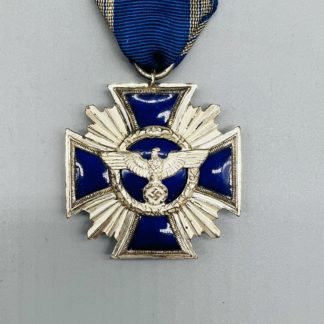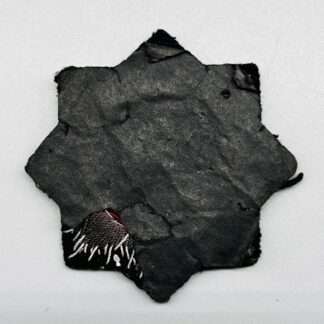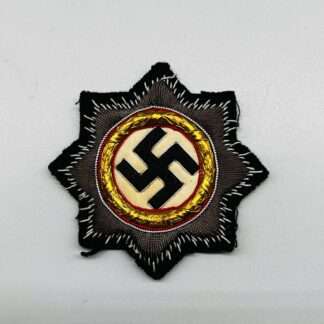Description
GERMAN CROSS IN GOLD
Adolf Hitler established the War Order of the German Cross (German: Der Kriegsorden Deutsches Kreuz) on September 28, 1941, commonly referred to as the German Cross or Deutsches Kreuz. This decoration was conferred in two categories: Gold, recognising repeated acts of bravery or military leadership; and Silver, honoring distinguished non-combat war service. The German Cross in Gold held a higher status than the Iron Cross First Class but remained below the Knight’s Cross of the Iron Cross. Similarly, the German Cross in Silver outranked the War Merit Cross First Class with Swords but was positioned below the Knight’s Cross of the War Merit Cross with Swords.
The German Cross came in two variations: gold and silver, distinguished by the color of the laurel wreath encircling the swastika. The gold edition was bestowed upon military personnel for repeated acts of bravery in combat or exemplary military leadership, typically requiring 6–8 acts. On the other hand, the silver version was granted for multiple distinguished services in the war effort, serving as a continuation of the War Merit Cross with swords.
According to Article three of the German Cross law, recipients were required to hold the Iron Cross (1939) 1st Class or the Clasp to the 1914 Iron Cross 1st Class, or the War Merit Cross 1st Class with Swords to be eligible for the German Cross in gold or silver. If an individual received both the silver and gold versions, only the gold variant was authorised for wear. Notably, the award of the German Cross was not a prerequisite for obtaining the Knight’s Cross of either the Iron Cross or War Merit Cross, and Knight’s Cross holders could also receive the German Cross.
Although civilians were ineligible, members of uniformed formations, including the police and railway workers, could be considered for the award. Starting from August 30, 1944, recipients of the gold class of the Close Combat Clasp were typically also granted the German Cross in gold without requiring additional justification, although this additional award was not universally conferred.


